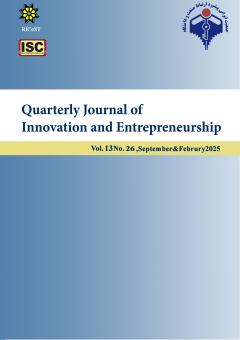Presenting a Model for The Growth of Sustainable Smart Tourism in Tehran Travel Agencies
Subject Areas : General
Rasool Sanavi Fard
1
![]() ,
Morteza Rahmati kachomesghali
2
,
Morteza Rahmati kachomesghali
2
![]() ,
Ali Asghar Eyvazi Heshmat
3
,
Ali Asghar Eyvazi Heshmat
3
![]()
1 - Associate Professor, Business Management, Business management Department, Faculty of Humanities, Islamic Azad University, Qom, Iran
2 - PhD Student, Business Management, Business management Department, Faculty of Humanities, Islamic Azad University, Qom, Iran
3 - Assistant Professor, Business Management, Business management Department, Faculty of Humanities, Payme Noor University, Tehran, Iran
Keywords: Smart tourism, Sustainability, Sustainable smart tourism, Tourism,
Abstract :
One of the mechanisms that can be useful in improving the competitiveness and development of tourism is smart tourism. The purpose of this research is to provide a model for the growth of sustainable smart tourism in Tehran travel agencies. This research is a quantitative and applied research, and in terms of data collection and analysis method, it is a survey descriptive research. The statistical population of the research was managers and senior experts of travel agencies in Tehran. 50 managers and experts of travel agencies in Tehran have been selected as a sample size using the purposeful method. In order to analyze the research data, fuzzy Delphi method, fuzzy Dematel method and fuzzy Analytical Network Process have been used. The results of the research showed that the research model, in order of priority, included components such as factors related to competitors, environmental factors, environmental factors, technical and infrastructure factors, factors related to tourists, factors related to suppliers, natural factors, social factors, and economic factors which are ranked according to research experts, from 1st to 9th in terms of importance. Based on the results of the Fuzzy Dematel method, in this model, economic factors, environmental factors, factors related to competitors, factors related to tourists and technical and infrastructure factors were determined as causal variables (influential variables). And environmental factors, factors related to suppliers, social factors, and natural factors were determined among the affected variables
